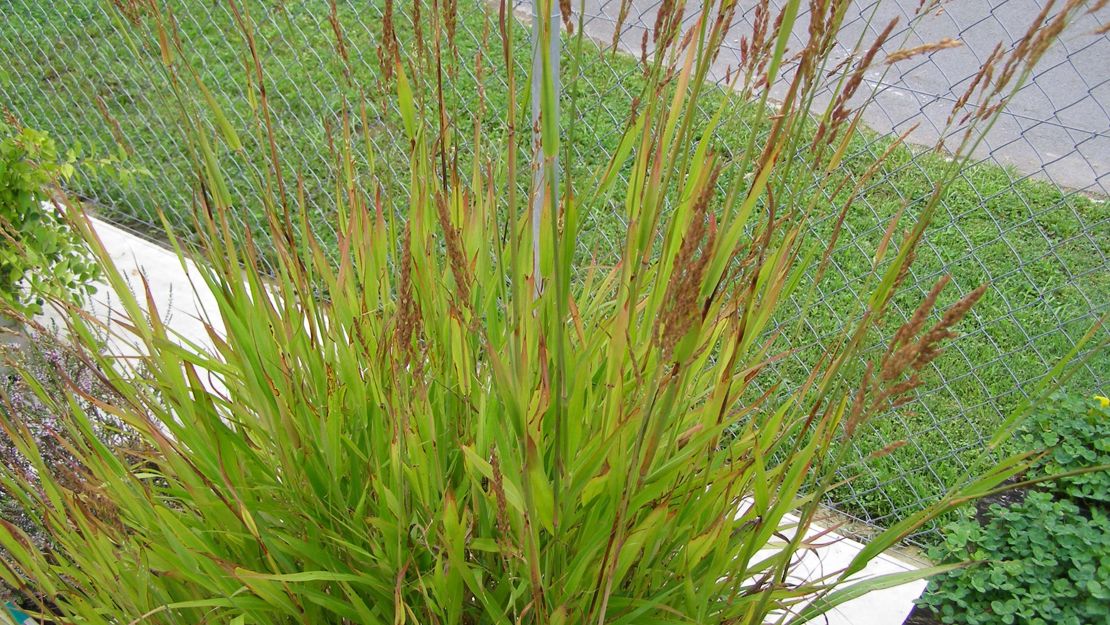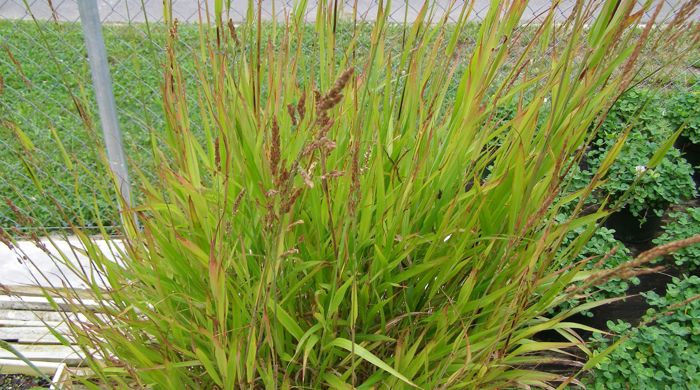Sorghum halepense
Johnson grass
Family: Poaceae
Origin: Africa, Eurasia

Regional Pest Management Plan (RPMP) status
- Unwanted organism
- Notifiable organism
General description
Tufted perennial grass < 3 m tall. Rhizomes are fleshy and creeping. Leaves are smooth, flat and alternate, with pale, prominent midribs and ribbed leaf sheaths. Flowers are borne in large, hairy, purplish pyramidal flowerheads < 50 cm long.
What you need to know
To help protect our environment, you must not breed, distribute, release or sell Johnson grass. As Johnson grass is an Unwanted Organism, these restrictions apply within the Auckland region and across the whole of New Zealand.
If you see Johnson grass anywhere, you must report it to the Ministry for Primary Industries on 0800 80 99 66.
Habitats
Open areas, forest and riparian margins, pasture, crop land, wasteland, roadsides.
Dispersal
Seeds dispersed by wind, water and attachment to animal pelts. Vegetative spread from rhizomes. Human-mediated dispersal through movement of contaminated soil, crop seed, fodder, vehicles and machinery.
Impact on environment
Forms dense infestations, smothering native vegetation and crops. Allelopathic and may be poisonous to livestock.
Control
Recommended approaches
Do not attempt to undertake control of this species. The Ministry of Primary Industries will carry out the control of this species.
Caution: When using any herbicide or pesticide please read the label thoroughly to ensure that all instructions and safety requirements are followed.




